Author & Photographer: George Mitchell
Our recommendations are not influenced by affiliate links – we have none. Our content and advice is derived from our personal experience and knowledge based on spending five months in Thailand as well as as well as travelling three-years Round-The-World (RTW). The content and photos are from our last 32-day trip to Thailand as well as our three-year RTW trip.
Why should you visit Bangkok?
Bangkok is noisy, frenetic, traffic-clogged city. It is easy forget that there are some truly spectacular sights and wonderful wats from a solid gold Buddha in Wat Traimit to a not real Emerald Buddha in Wat Phra Kaew.
What are the Best Sights of Bangkok?
What are the best places to visit, even if you are not a first timer? The must-see of Thailand is Wat Phra Kaew/Grand Palace. However, we would start off with the Bangkok National Museum because they provide free English language tours on Wed-Thu 09:30 hrs. Here is where we learned about Thai Buddhist culture, the Indianization of Southeast Asia, and Thai art and architecture.
We would combine the Bangkok National Museum with the next best places to see: Wat Pho, Wat Arun, and the Royal Barges. Note that the “h” in Thai is silent so Pho is pronounced Po. This itinerary can be found in…
Next we would be sure to visit the following must-see sights: Wat Traimit, Erawan Shrine, Wat Saket, Wat Benchamaborpit, Jim Thompson House, and Ban Kamthieng.
Finally do not miss the people, the food, the night markets and the weekend market. There is so much to see, it will require several posts.
Why should you Visit the Grand Palace?
Some tourists, who prefer the beaches of Southern Thailand, told us they wanted to get out of Bangkok as soon as possible. We could understand their feelings. But going to Bangkok and missing the Grand Palace and Wat Phra Kaew is like going to Rome and not visiting the Pantheon!
In the Are Ayutthaya and Sukhothai Worth Visiting? post, we stated that if you wanted an idea of what the ruins of Ayutthaya used to look like then you need to visit the Grand Palace and Wat Phra Kaew. This post will focus on these two most spectacular sights of all of Thailand.
Is Bangkok the Real Name?
No, Bangkok is not the name used by Thais. It is officially Krung Thep Maha Nakhon. But the Thais just call it Krung Thep, which means City of Angels. Remember that when you are asking for the bus or train to Bangkok.
Was Siam an Empire?
Yes, Ayutthaya was the Rome of Southeast Asia. At its peak, it ruled Thailand, Cambodia, Laos, and parts of Myanmar (Burma) and Vietnam. Ayutthaya was considered one of the three Asian superpowers by the Europeans.
Siam is not the name used by the Thais, It was the name popularized throughout Europe by the Portuguese, the first European nation to establish trade relations. The people of the Ayutthaya Kingdom called their country Krung Tai, meaning Tai Country.
After a 14-month siege in 1767, Ayutthaya was destroyed by the Burmese army resulting in the collapse of the empire. The Fall of Ayutthaya was a gut punch to the Thais. King Rama I (1782-1809) was determined to recreate the glory of Ayutthaya and 15 years after the sack he began construction of a new Grand Palace based on the plan of destroyed Royal Palace in Ayutthaya. In addition he needed a royal (phra) wat to replace Wat Phra Si Sanphet and to house the not real Emerald Buddha.
Grand Palace Sights
All points of interest in this post can be found on our custom Bangkok Google map and are suffixed by their Google Rating (G0 to G5). We will also refer to the numbered sights on the Plan of Wat Phra Kaew below so you can follow the itinerary used in this post.
The Best Wat Phra Kaew View
The best (and free) view of the overall Wat Phra Kaew site is from outside the palace grounds at a grassy area along Sanam Chai Road looking west. Wat means temple complex, not a temple building. Here you can see the Ubusot on the far right and the spires of three of the most important buildings in a row.
Wat Phra Kaew
Wat Phra Kaew (G4.7, pronounced wat pra kay-o) is regarded as the most sacred Buddhist complex in Thailand. Many people use the English name “Temple of the Emerald Buddha” but it is not one temple. Its’ real name is Wat Phra Si Rattana Satsadaram, where Phra means royal, Si means venerable, and Rattana means precious jewel. Rattanakosin was the original name of the Bangkok kingdom.
There is one major difference from other wats in the country. You will not see monks living or walking within this complex. Wat Phra Kaew is the royal temple of Thailand where important ceremonies are held. It was originally for the royal court not the public. The wat area is actually very small and was overrun with tourists during the New Year’s period.
You enter the wat enclosure at the gate (Plan 33) behind the Ubusot. Turn left then right along the “alley” on the north side to get to the “front” of the Ubusot (chapel). You will be overwhelmed by the Phra Mondop and other architecture on a raised platform. Ignore these for now. Keep walking but do notice the Chinese statues (near Plan 20) in between the Ubusot and the raised platform.
Wat Phra Kaew Ubusot
Like many tourists, we originally thought this ordination hall (ubusot) was Wat Phra Kaew (plan 1). But wat means the whole complex. This ornate ubusot was built to house what is considered the most important Buddha image in Thailand.
The columns are decorated with multicoloured mosaic tiles trimmed with gold. This closeup shot gives you a better idea.
Along the base are red flowers and birds on pale green porcelain tiles, which were imported from China.
Inside the colonnade, there is an even more ornate wall.
There is an incredible amount of gold decoration interspersed with with multi-coloured glass tiles.
But to us, the most iconic images are the gold Garudas holding two Nagas in their claws. This is the national symbol of Thailand. While the Garuda and Naga are enemies in the Hindu-based literature, they are both revered and used throughout Thailand. Garuda is the mount of the chief Hindu god Vishnu. Naga is the deity that ensures enough water falls to ensure a good harvest.
Emerald Buddha
The Emerald Buddha is jade, not emerald. The Emerald Buddha sits in the lotus position on a gilded wooden throne in the shape of a miniature prasat, a spired temple. He wears a different gold cloak each season.
According to legend, the statue was created in Patna, India in 43 BC, but that is a myth. More interesting is how it survived all the invasions, especially by the Burmese. It seems the Thais have a habit of hiding priceless statues in stucco – the Gold Buddha in Wat Traimit is another example. .
In 1437 lightning struck a wat in Chiang Mai causing some stucco to flake off and reveal emerald. Due to marriage with a Lanna princess, the statue ended up in Laos. In 1564, the King of Laos fled the Burmese taking the image with him to Vientiane. In 1778, King Taksin captured Laos and brought the statue to Bangkok.
Ubusot Doors and Window Shutters
Doors and window shutters are important portals from the mundane to the divine world. They are decorated with special motifs in order to ward off the entry of evil spirits. In the Ubusot, they are ornately decorated with incredible inlaid mother of pearl designs of auspicious symbols or guardian deities.
King Ram Khamhaeng Pillar
At the west end of the ubusot (Plan 6) is a pillar commemorating King Ram Khamhaeng of Sukhothai, the first kingdom of Thailand. The two lead oxen were used in the Royal Ploughing Ceremony (Raek Na Khwan), an ancient rite held to mark the traditional beginning of the rice growing season. Like so many other cultural practices, this is derived from Hinduism.
However, another reason to make this slight diversion is that it is a good location to capture a view of the raised platform with the main attractions of the wat. Also note the typical green fringed, orange tiled roofs.
Two Golden Chedis
Contrary to the popular saying; in Thailand all that glitters is gold! The two chedis (Plan 12) are clad in copper that were then covered in gold leaf. But chedis were not made for Instagram shots by future tourists.
Chedis or stupas symbolize prehistoric burial mounds used to hold the remains of royal people or holy artifacts. These chedis house the remains of the mother and father of King Rama I, the first king of the Chakri Dynasty (Bangkok).
Once your eyes recover from the glaring gold, the most spectacular feature are 4 monkey and 16 colourful demon images using their hands to “support” the upper chedi. These images are derived from the Ramakien, the national epic of Thailand. They are extremely popular with tourists who mimic the upturned hand gestures of the images.
Prasat Phra Theo Bidorn
Prasat Phra Theo Bidorn (Plan 9) is the Royal Pantheon containing images of each king of the Chakri (Bangkok) Dynasty. While it is only open one day per year, it is the exterior that is spectacular.
This cruciform building supports a spire form called a prasat (Sanskrit meaning palace). It is a popular Thai architectural form that was adapted from the Khmer prang form, which was adapted from the Indian shikara.
Like everywhere in Thailand, nagas line the stairway entrance. However, what is unique here is that the naga has five heads each wearing pointed crowns that are used by Thai royalty. These nagas look anthropomorphic because nagas are part serpent and part human. The origin is the Indian naja or cobra.
If the nagas don’t stop you, then the giants with clubs are waiting for you at the top of the stairs. Good luck!
Himavamsa Forest
Welcome to the legendary Himavamsa Forest (Plan 19) in the Himalayas where mythical creatures and spirits live. The forest has had a big impact on Thai and Buddhist culture and is depicted in art, literature, and even movies. Asurapaksi is half-giant (yaksha), half-bird creature.
I particularly like this statue of an Aponsi or Thepnorasi, part human and part lion. Next to it appears to be a blue and white Chinese vase. These celestial beings stand guard over Wat Phra Kaew.
Phra Mondop
Phra Mondop (Plan 10) is located at the rear of the Prasat Phra Thep Bidorn. It is a simple square library but the indented Mondop or spire roof makes it appear to be multi-faceted.
It houses a copy of the Tripitaka sacred scriptures that replaces the one lost during the sack of Ayutthaya.
We particularly love the gold and green glass mosaics with a lotus bud motif. Green and gold really go together. Words cannot describe this ornate beauty. Along the base is a row of gilded devas (shown) above a row of asuras (not shown). Devas or suras are benevolent deities. Asuras means “not suras” and later were interpreted as demons.
The redented (saw-tooth) gilded columns with two gilded giant guardians at the entrance (Plan 8) add to the majestic atmosphere.
Phra Sri Rattana Chedi
Phra Sri Rattana (literally royal venerable precious) Chedi (Plan 11) was built to hold a Buddha relic. The bell-shaped chedi replicates the one at Wat Phra Si Sanphet in Ayutthaya.
Angkor Wat Model
King Rama IV wanted to move a temple from Angkor Wat to here but was told they were too large to move. It is interesting that the king built a model of Angkor Wat (Plan 18) inside their own royal wat. Angkor Wat (1113-1175) epitomizes Khmer art and architecture. This just reinforces the importance and influence the Khmer Empire had on its former Thai colony.
At its peak, the Khmer Empire (892 – 1431 CE) included Cambodia, Thailand, Laos, and southern Vietnam. It was larger than the Constantinople Roman Empire.
This photo from our first trip even fooled me. Where are these incredible parabolic prangs? They are from Angkor Wat; but they are just a model. Behind them stands Viharn Yod.
The central prang represents the cosmological centre of the Buddhist universe. It represents the mountain where the gods reside. This is called Mount Meru in Hinduism or Mount Olympus in Ancient Greece and Ancient Rome. This was part of the religious beliefs of their common ancestors, the Proto-Indo-European (PIE) tribes (formerly called the Aryans).
The four smaller prangs around it represent the four continents. This is located on top of a raised platform surrounded by eight chedi-shaped chapels.
Viharn Yod
The incredible Viharn Yod (Plan 22) has a Prasat-style that symbolizes the royal crown. It is decorated with multi-coloured porcelain mosaics from China.
Ramakien Murals
Murals can be found in the halls and the cloister walls (Plan 29) surrounding the wat complex. The murals start at the north gate of the wat (Plan 36) next to Viharn Yod. Follow the cloister walls clockwise until you reach the exit (Plan 32).
There are 178 murals depicting stories from the Ramakien. While the main story is identical to that of the Ramayana, many aspects were transformed into a Thai context, such as Thai names, cities, temples, palaces, clothes, and weapons. This photo of mural 128 shows the green-skinned demon king, Thotsakan in various scenes. His palace looks very much like the Prasat Phra Theo Bidorn.
The simplified story of the Ramayana (Ramakien) is about Rama (Phra Ram), a prince of Ayodhya (Ayutthaya) who has been exiled with his wife Sita (Nang Sida). Sita is kidnapped by Ravana (Thotsakan), the demon king of Lanka, who hopes to win her over. Rama is helped by the garudas, the monkey army and Hanuman, the monkey king/general. After many battles, Rama and Sita return to Ayutthaya to be crowned king and queen.
But this is more than an action story. Rama is the avatar of Vishnu. Sita is the avatar of Vishnu’s consort, Lakshmi, known for her dedication, self-sacrifice, courage, and purity. The story is an allegory about honesty, faith, devotion, and duty. It illustrates the dharma through model characters.
In panel 99, the demon Intarachit shoots snake arrows from the sky that coil around Rama and Sita. Intarachit is the Hindu warrior Indrajit. the conqueror of Indra, king of the gods (also known as Zeus, Thor or Jupiter).
One interesting fact is that we do not know the names of the sculptors, painters or architects who created glorious Buddhist works of art. Because they do this to earn merit, their work is not signed; nor were their names recorded.
Rama arrived at the battlefield and saw the army of monkeys being pinned down by nagas. Phra Ram fires a special thundering arrow into the sky to call the garuda king, Phaya Subanraj. When the nagas saw the garuda, they released their hold on the army and fled into the earth.
Since its adoption by the Thai people, the Ramakien has become a major part of the culture. The Ramakien is considered one of the masterpieces of Thai literature and is still read, and is taught in Thai schools.
Grand Palace
By this point you will probably be tired out and you haven’t even walked around the much larger grounds of the Grand Palace. Actually, the rest of site was disappointing as confirmed by the number of photos I have taken. It just does not compare to the jewel in the crown. The following were the most phot0genic sights.
Phra Asada Maha Chedi
Outside the Wat Phra Kaew enclosure are eight prangs named Phra Asada Maha Chedi (Plan 28). Well six of them are outside but two are within the wat enclosure including the one below
The prangs are thinner and taller than the ones in Ayutthaya. The prang or tower is a Khmer adaptation of the Indian shikara (Sanskrit peak). Each one symbolizes an aspect of Buddhism. Eight is an auspicious number in Buddhism, which is based on the Eight Fold Path.
Ho Phra Gandhararat
From Wat Phra Kaew head south to Ho Phra Gandhararat (G5.0). It was erected by King Rama IV and used to house a Buddha image from Gandhara (now Kandahar in Afghanistan) believed to have the power to invoke rain.
Perhaps that is why the gold doors seem to have an agricultural theme.
Phra Thinang Dusit Maha Prasat
The most photogenic location was Phra Thinang Dusit Maha Prasat (G4.9), in the background of the photo above. Maha Prasat, which means large palace, symbolizes Mount Meru. The pediments depict Narayana (avatar of the Hindu god Vishnu) riding on a Garuda. This symbolizes the association of the king with “The Preserver” (Vishnu). In the front porch is a royal throne used by King Rama I.
In the middle of the photo is the much smaller Phra Thinang Aphorn Phimok Prasat. It was used as palanquin mounting platform by the king. The geometric garden in the foreground is reminiscent of European formal gardens.
Chakri Maha Prasat Hall was a royal residence with an upper Thai and lower European design by a British architect and built in 1877. It is used for state banquets.
The setting is very park-like, though more artificial than natural. Many of the other buildings of the palace are European in style and not that interesting. What caught my eye were the shaped trees
Other Posts You May Like
Explore Bangkok in four posts, one for each day.
Bangkok Day 2 – Wat Po, Wat Arun and the Museum
Bangkok Day 3 – Less Visited Places Walk
Chiang Mai, Ayutthaya, and Sukhothai are the best cities to visit in Thailand.
Custom Maps and Facts to Plan your Itinerary
TH is the ISO Country Code for Thailand.
THB is the ISO Currency Code for Thai Bahts.
THB 100 = CAD 3.86, EUR 2.59, GBP 2.25, USD 2.83
When is the Best Time to Visit?
Based on average maximum temperatures from NOAA:
| Month | Season | Max Temp | Rain Days |
| Nov-Feb | Cool | 30 to 33°C | Nov = 4 |
| Mar-May | Hot | 34 to 35°C | 5 to 13 |
| Jun-Oct | Rainy | 31 to 33°C | 9 to 17 |
The data supports the fact that Nov-Feb is the best season to visit.
How to Get to Around Bangkok?
On our first trip to Thailand, we walked all around the old city. We used buses to go to more distant sights. There are also taxis and even an LRT. We would not recommend driving a rental car in Bangkok unless you are from Cairo or Manila. Rent a car just before driving around the countryside,
On our first trip to Thailand, we usually took the bus to travel between cities. In those days, the bus destination was only in Thai script. So we always made sure to find out the bus number, which use the same Arabic numerals as we do. There are also trains.
We dropped our car off at the airport outside the city and took the bus into the centre.
Is Thailand Safe?
According to the Numbeo Safety Index, Thailand is a very safe country.
Thai Culture and History
The Artistic Heritage of Thailand, book by National Museum Volunteers, Sawaddi Magazine ca. USD 12.58
Bangkok National Museum information
Address: 4 Na Phrathat Road Phra Nakhon
Hours: 09:00 – 16:00 hrs. Wed-Sun
Adult Fee: Foreigners THB 200 = USD 5.66 for age < 60 years old
Free Tours: 09:30 hrs Wed-Thu
Wat Phra Kaew information
Hours: 09:00 – 15:30 hrs. daily
Adult Fee: Foreigners THB 500 = USD 14.26
The following posts provide background information about Thailand:

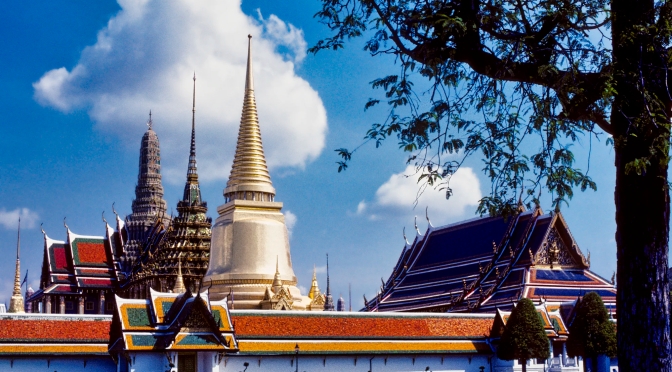
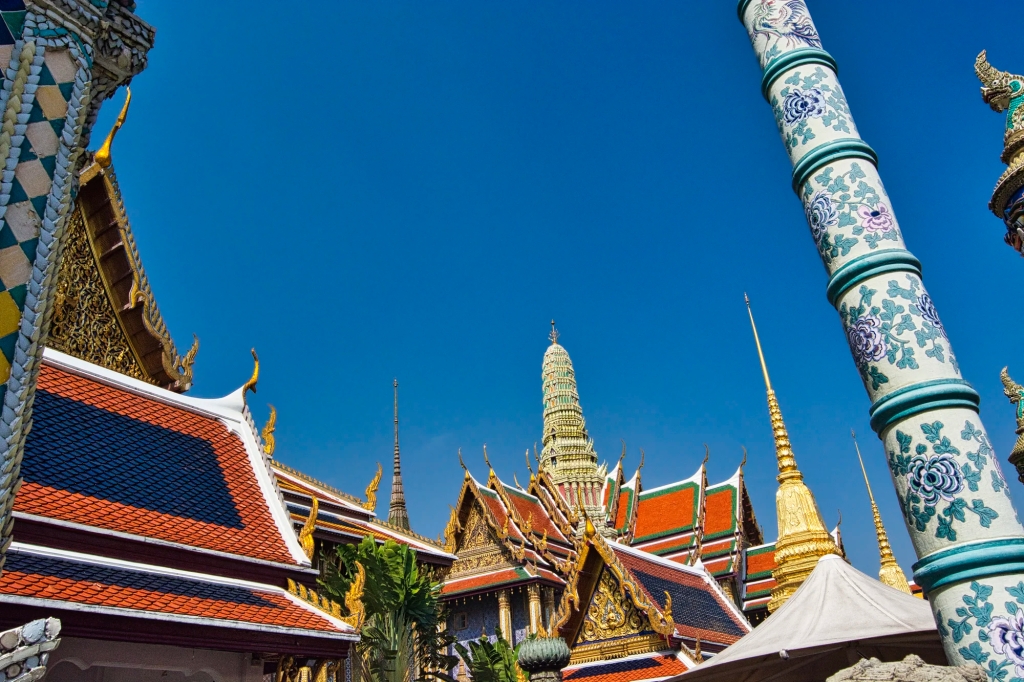
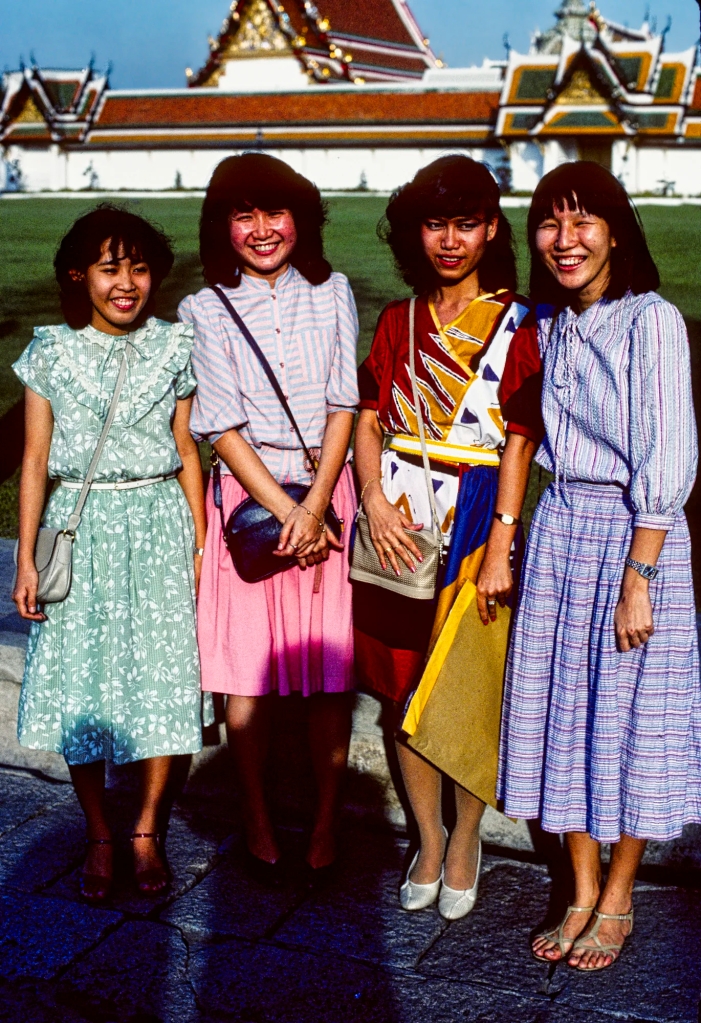
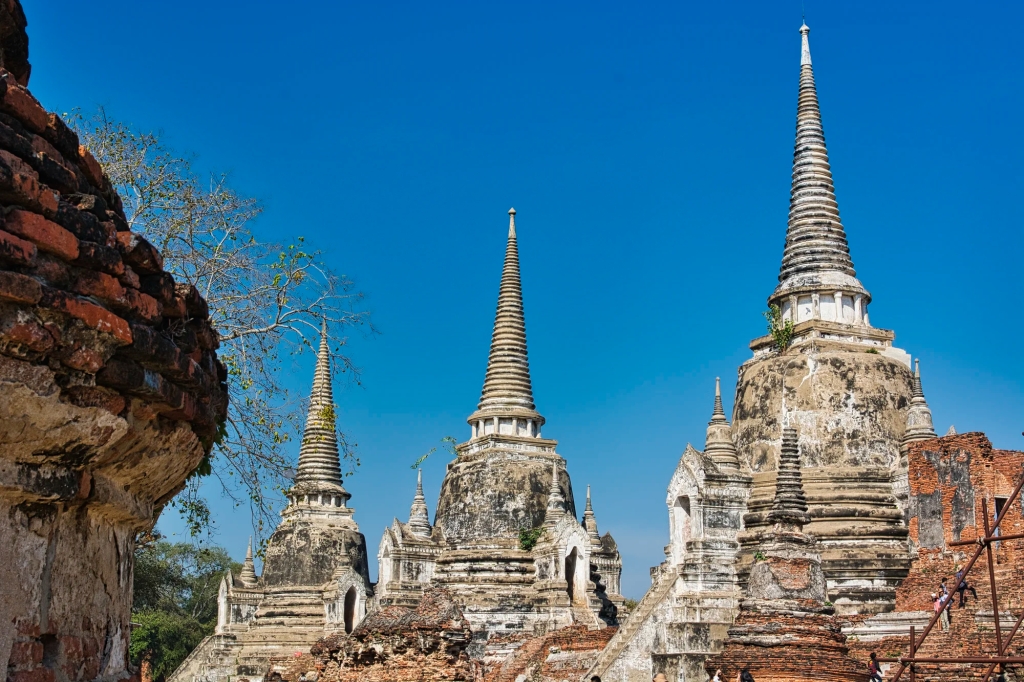
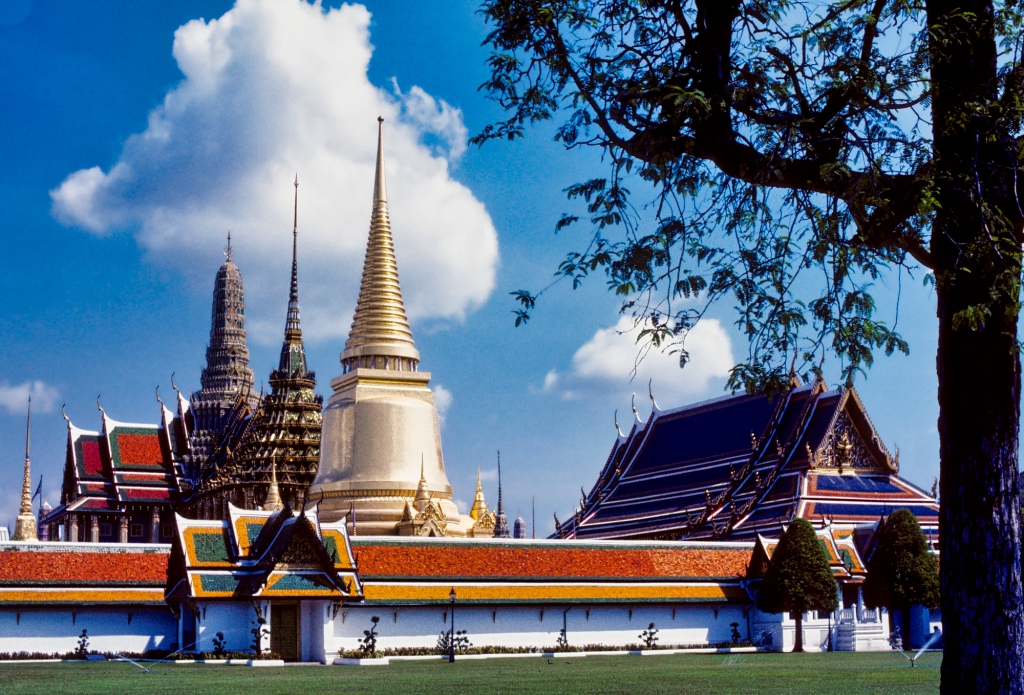
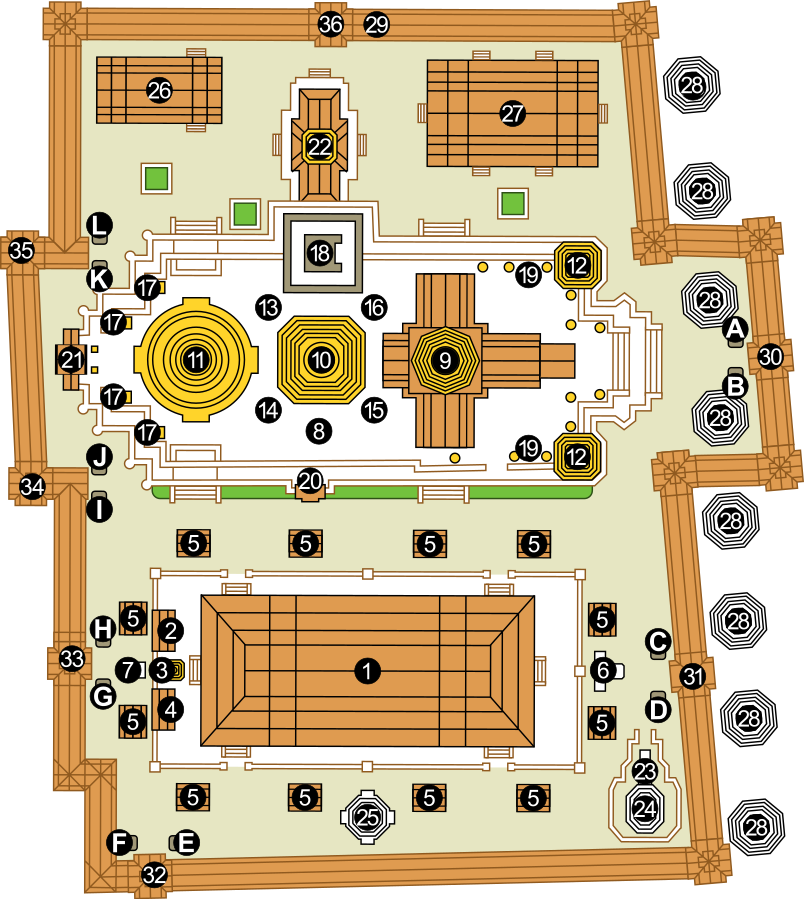
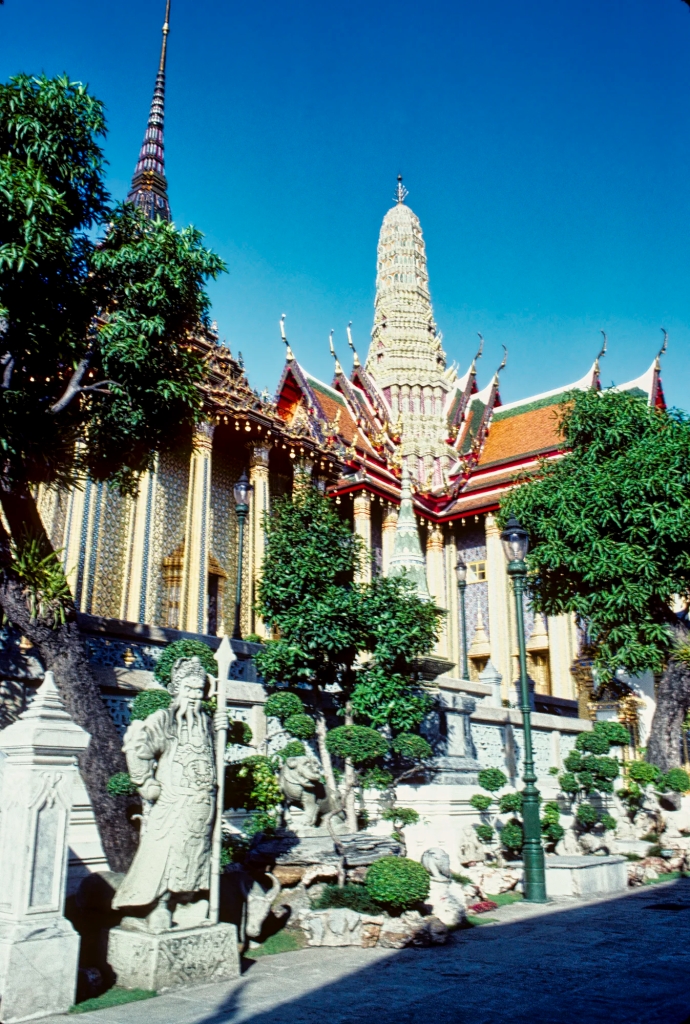
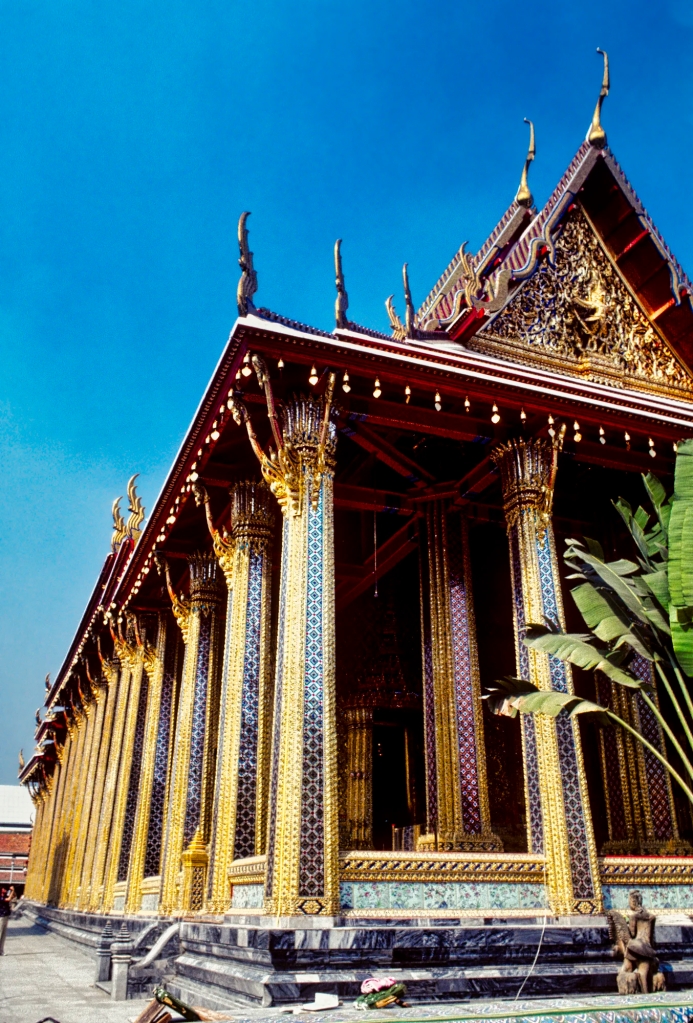
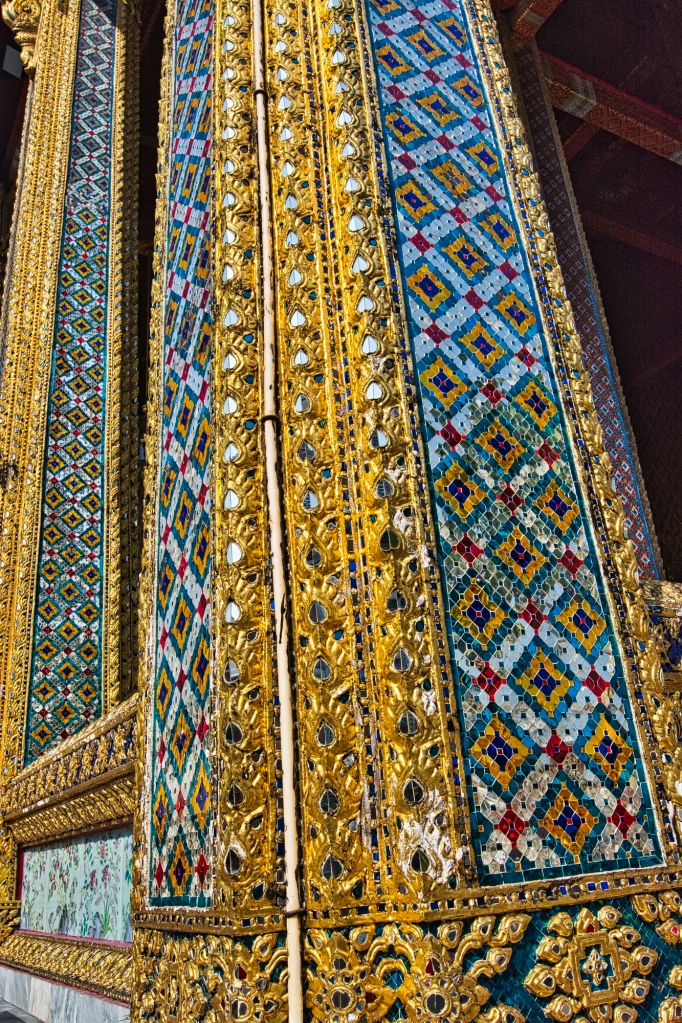
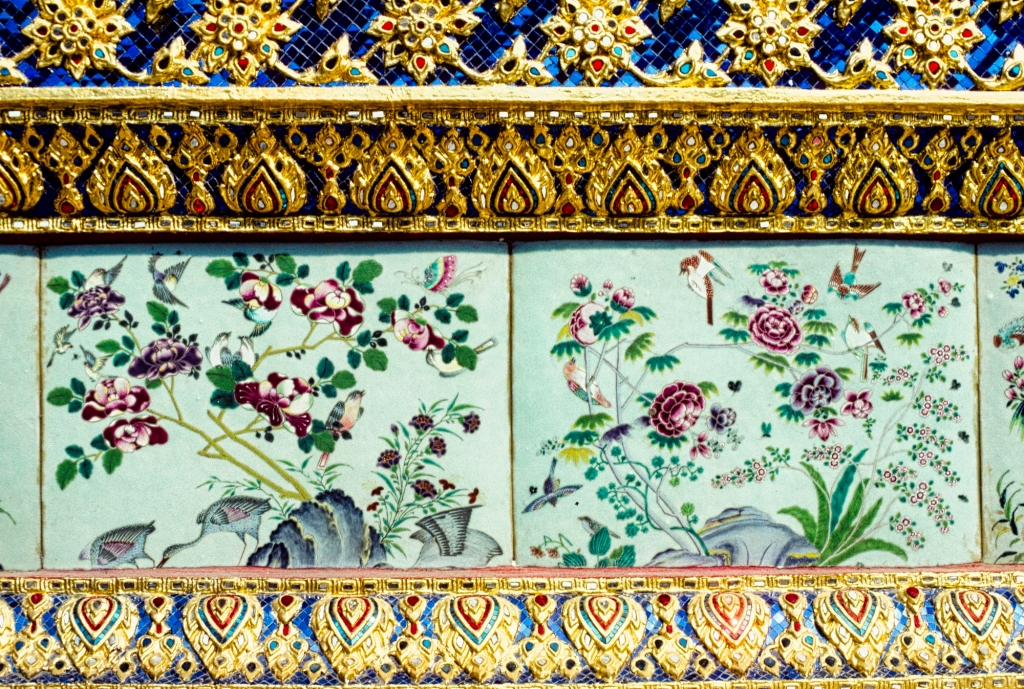
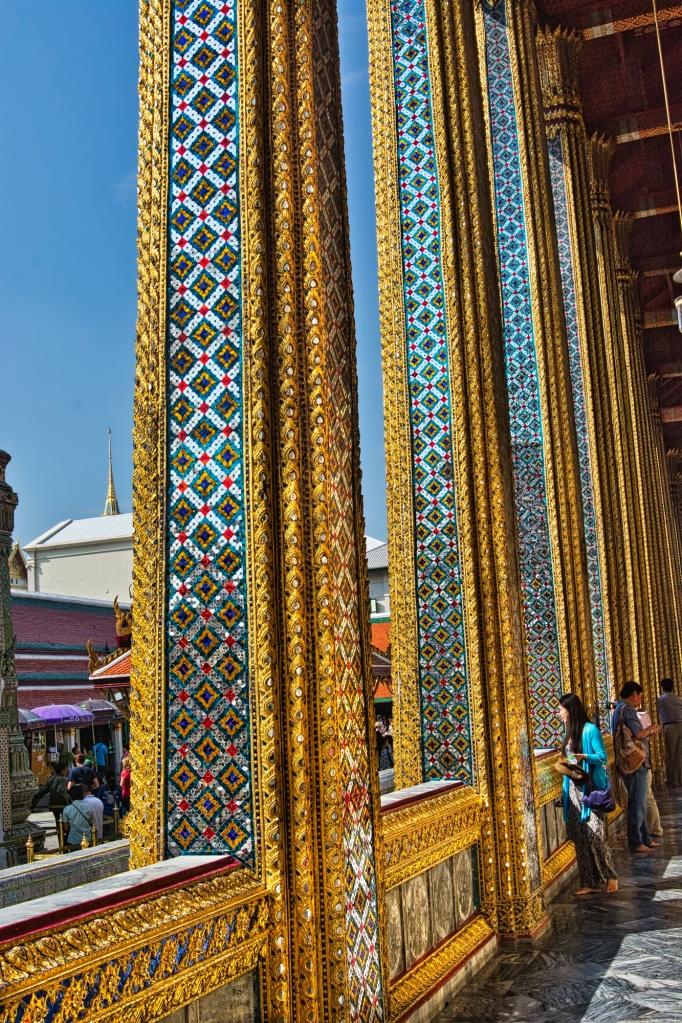
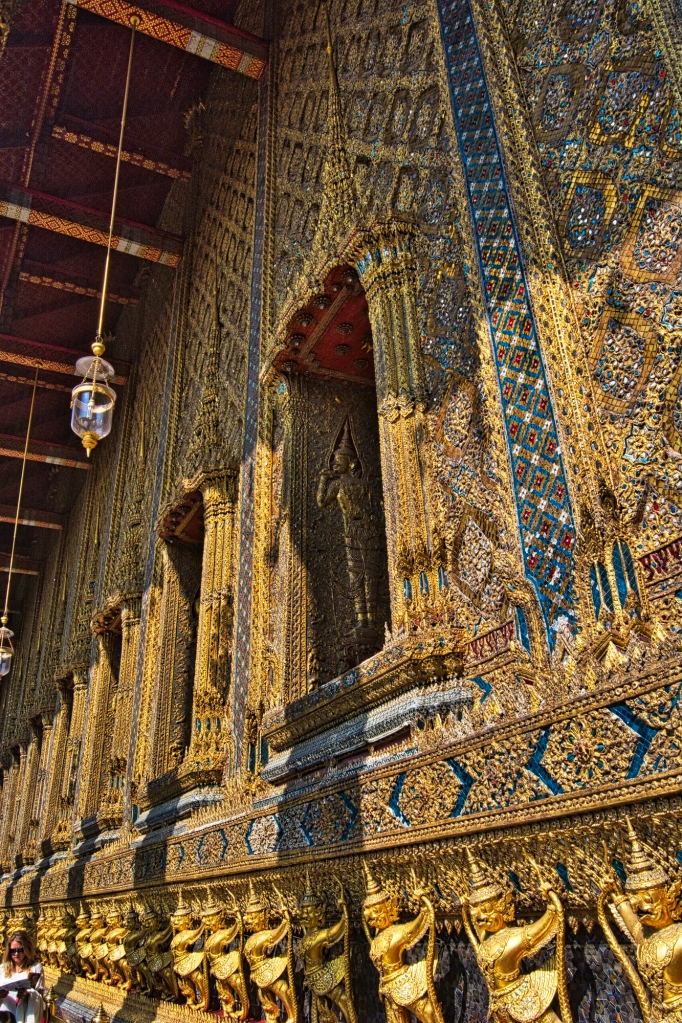
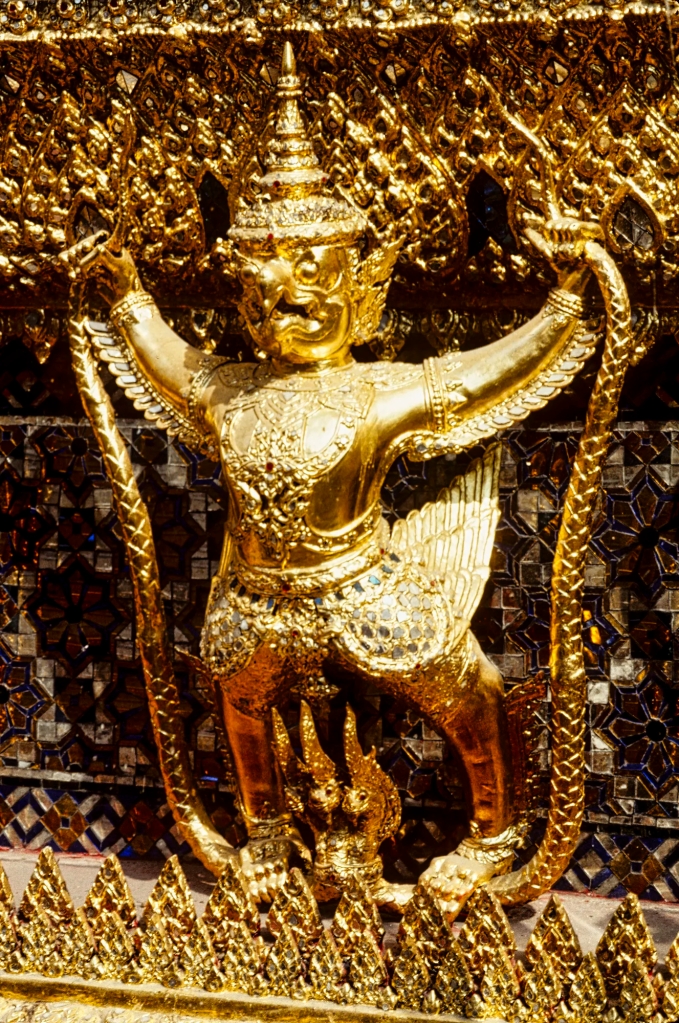
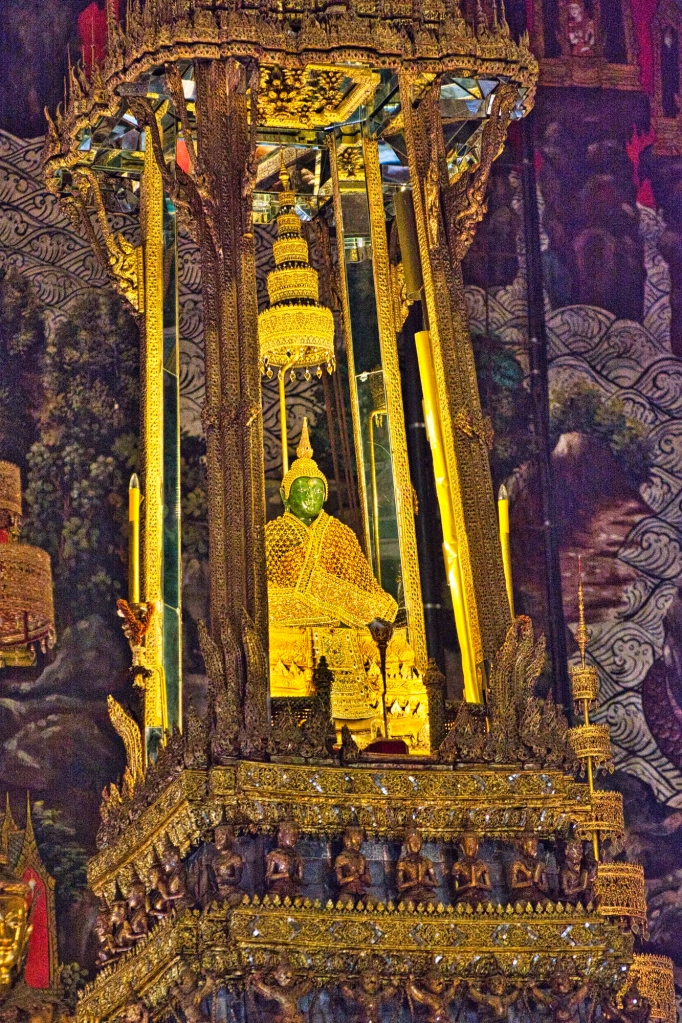
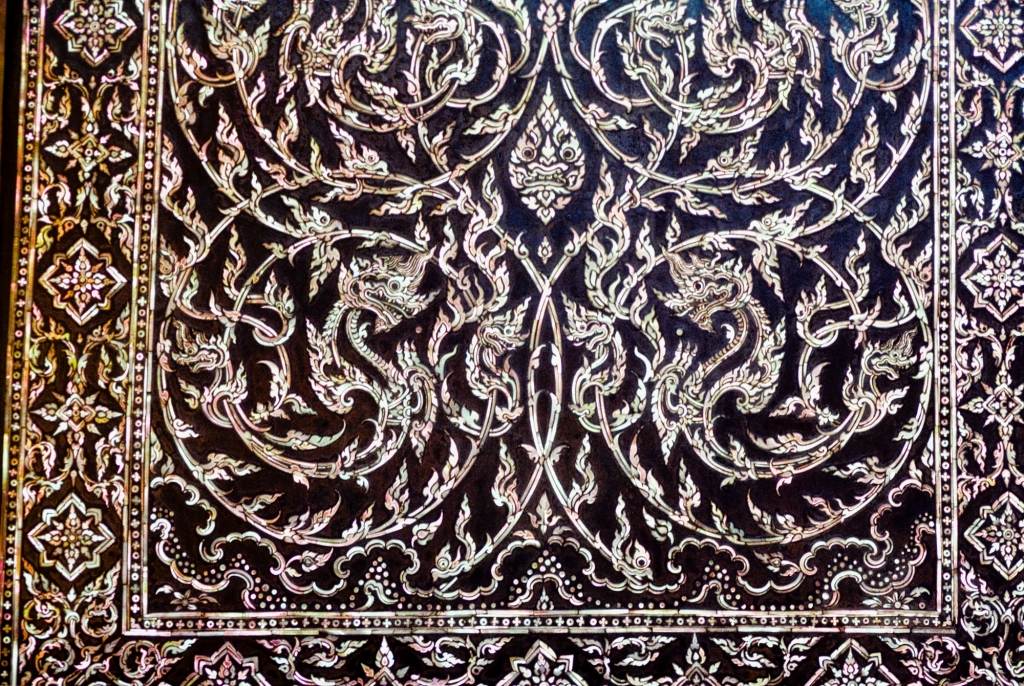
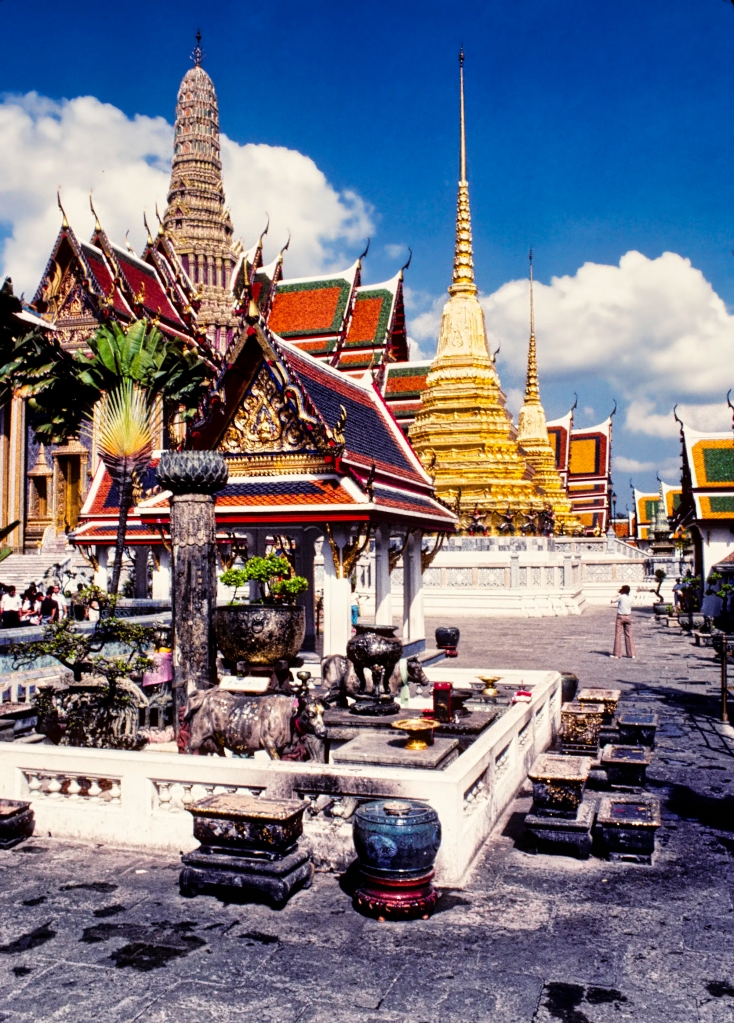
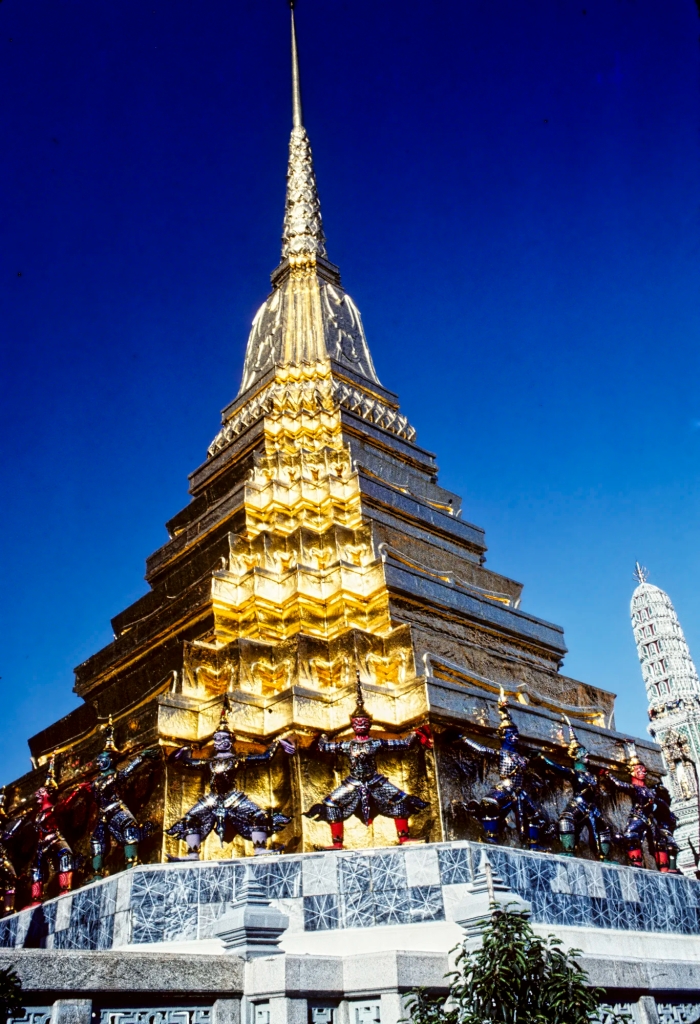
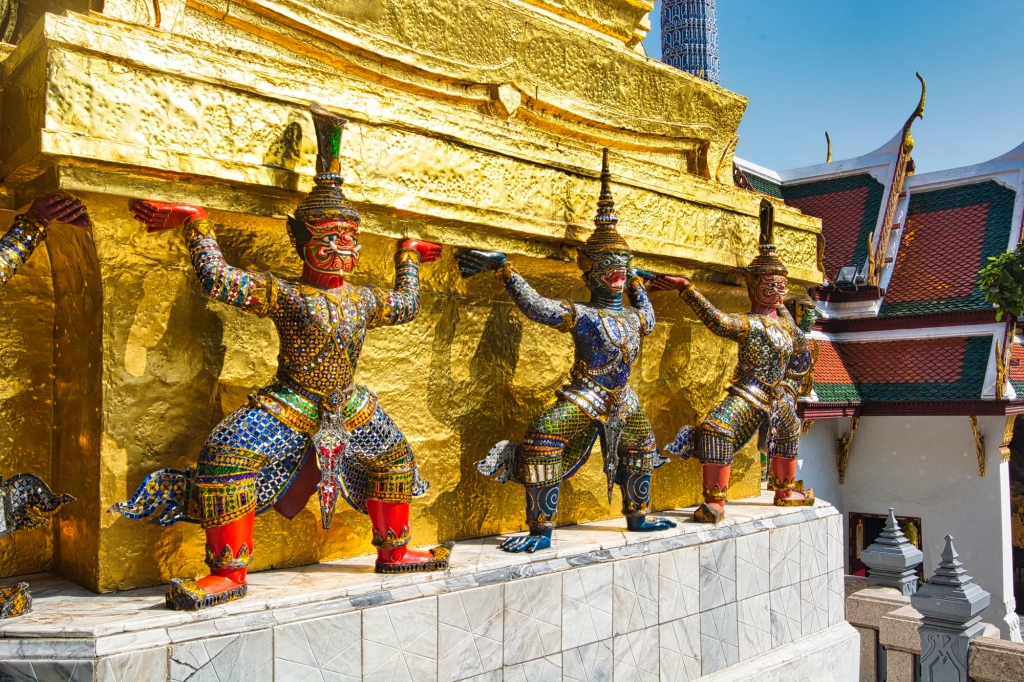
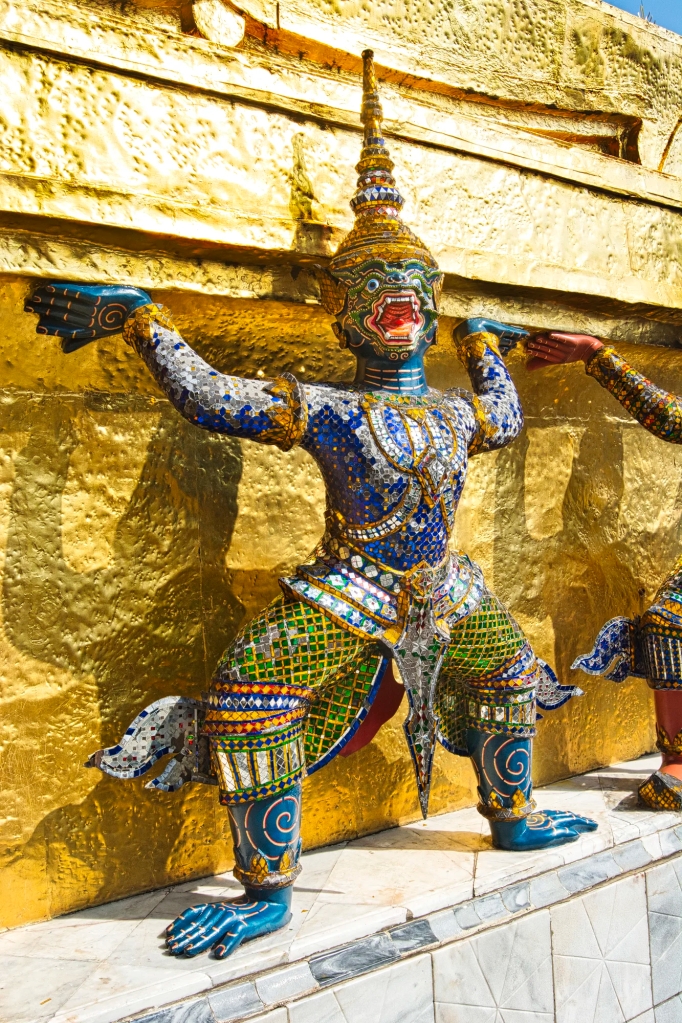
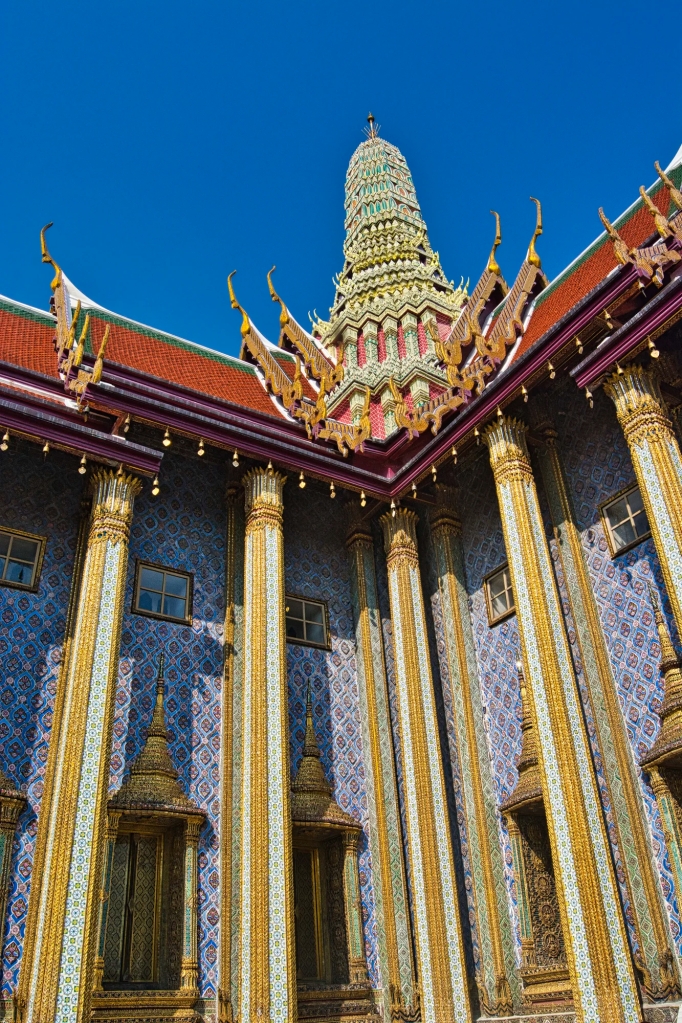
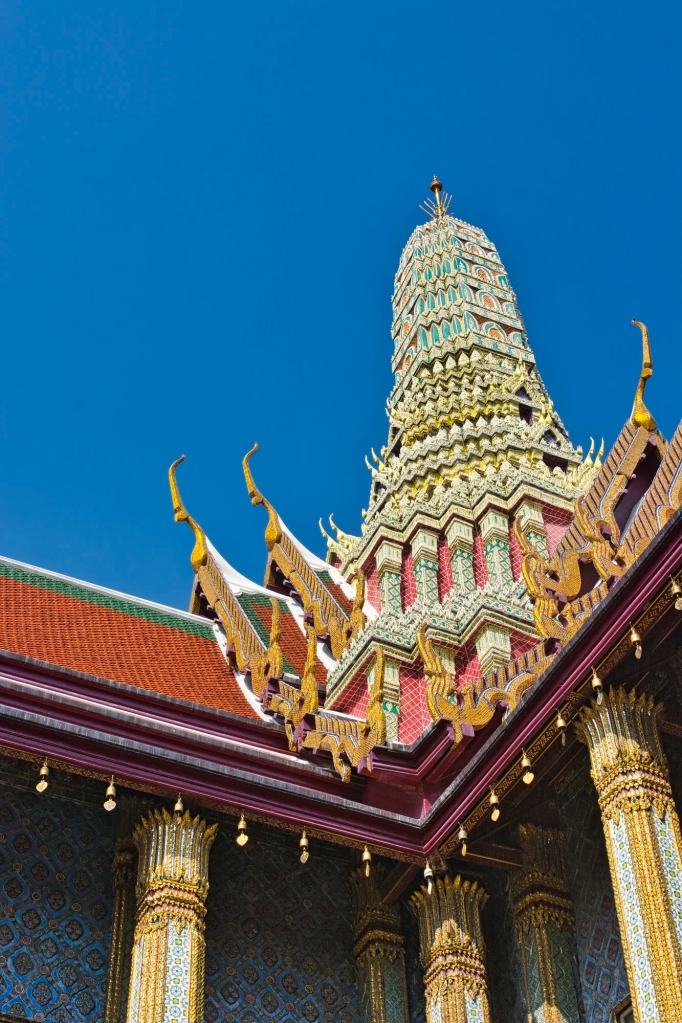
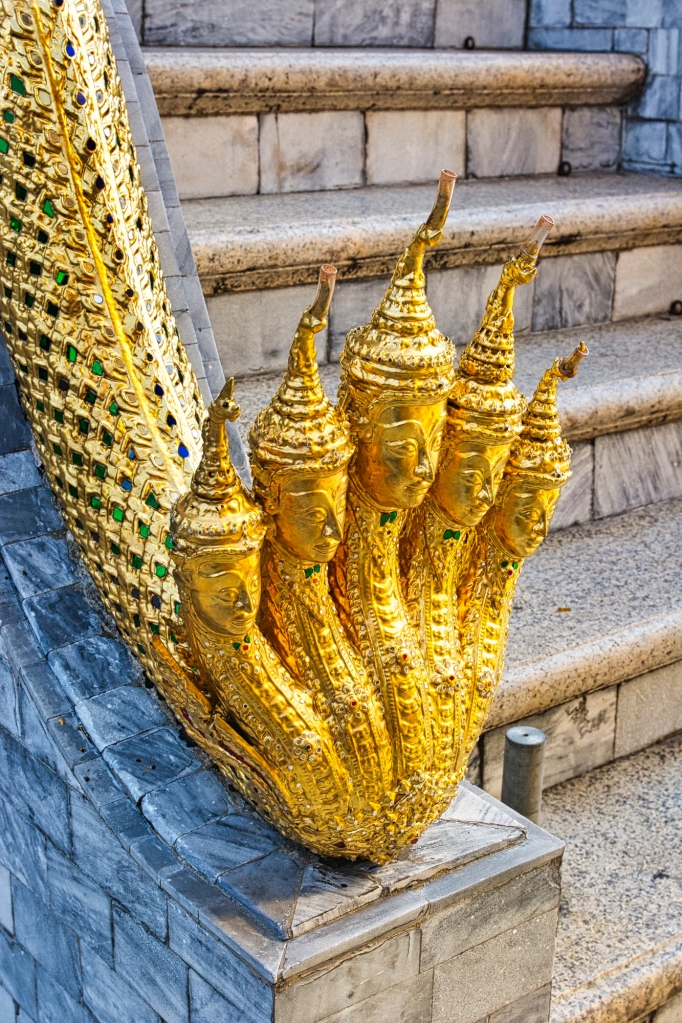
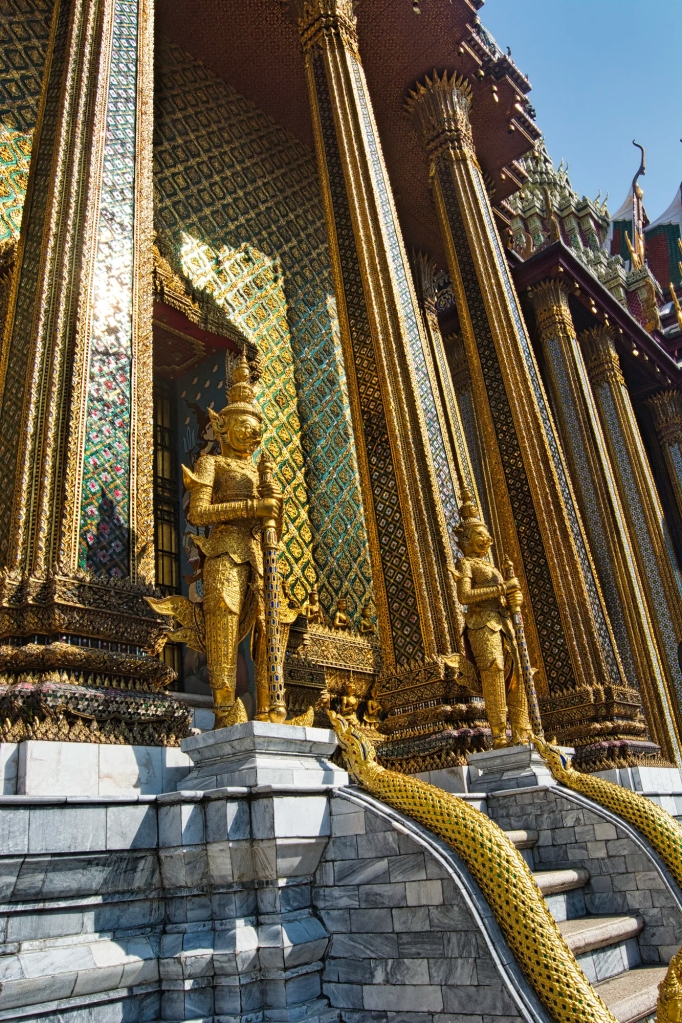
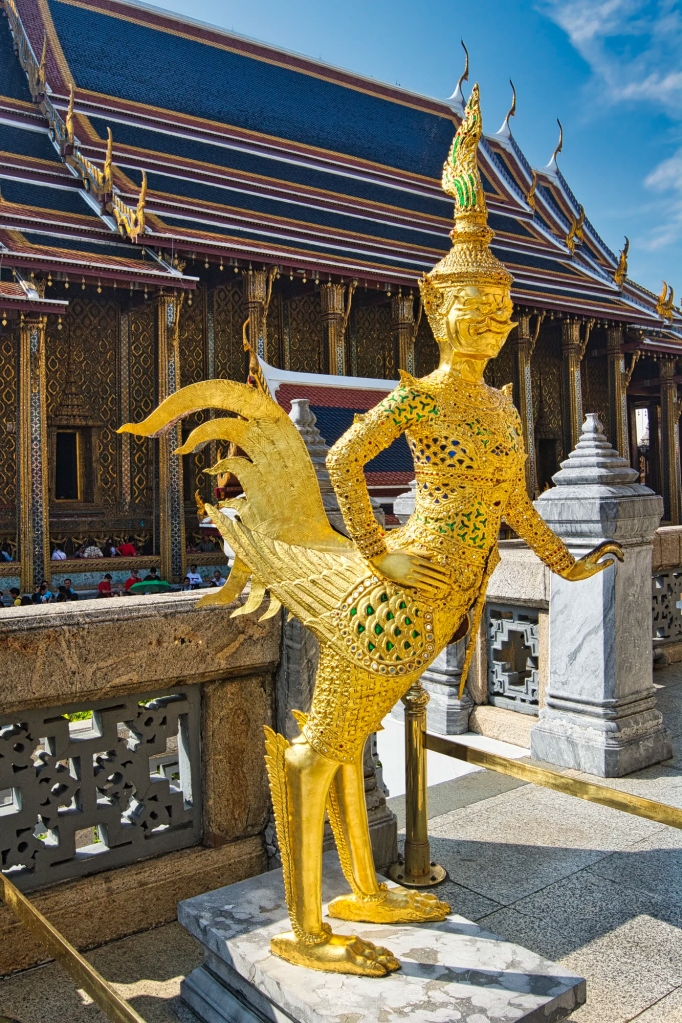
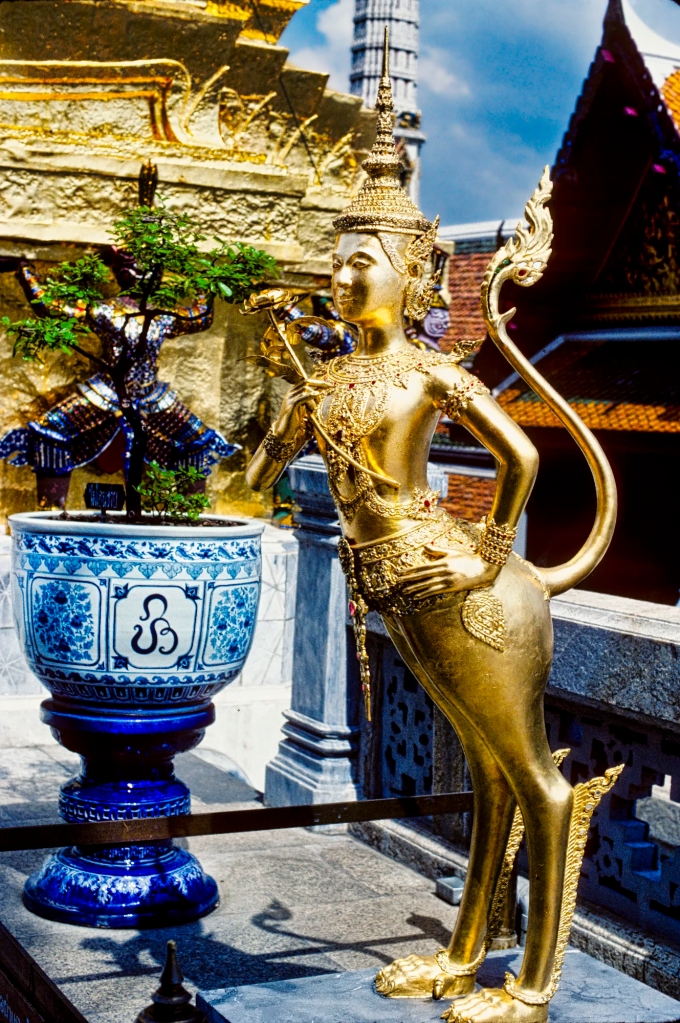
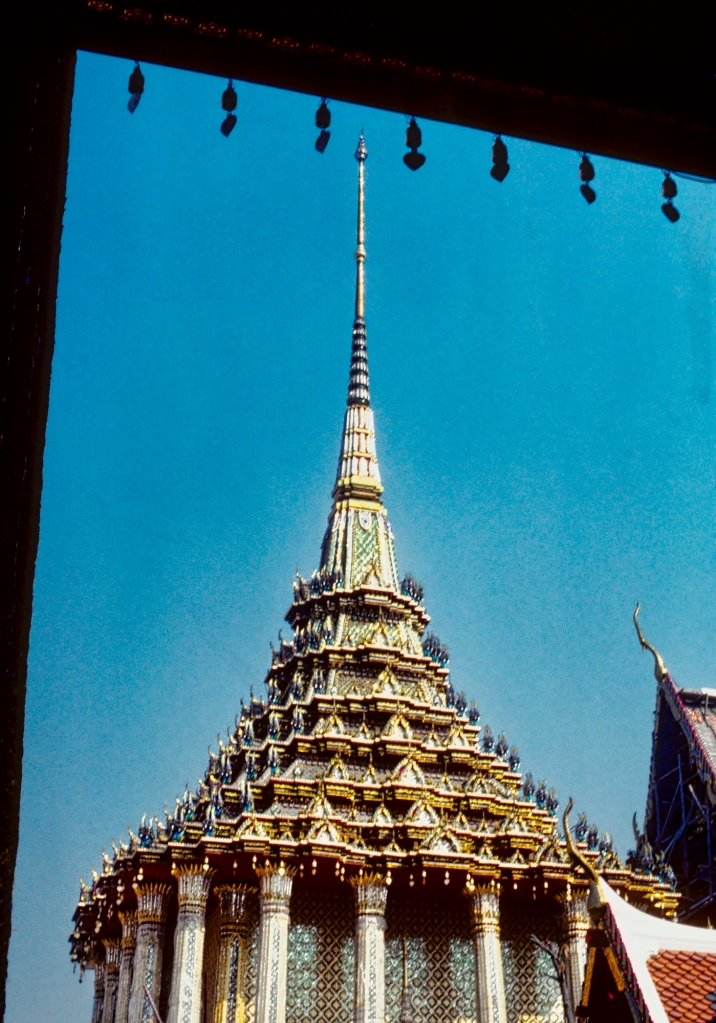
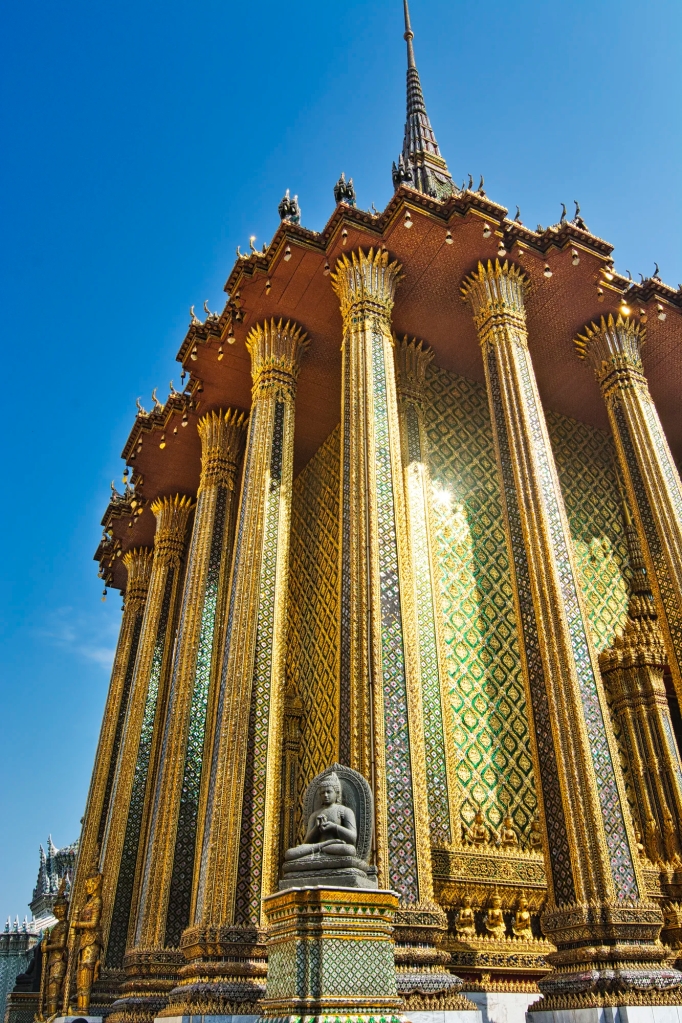
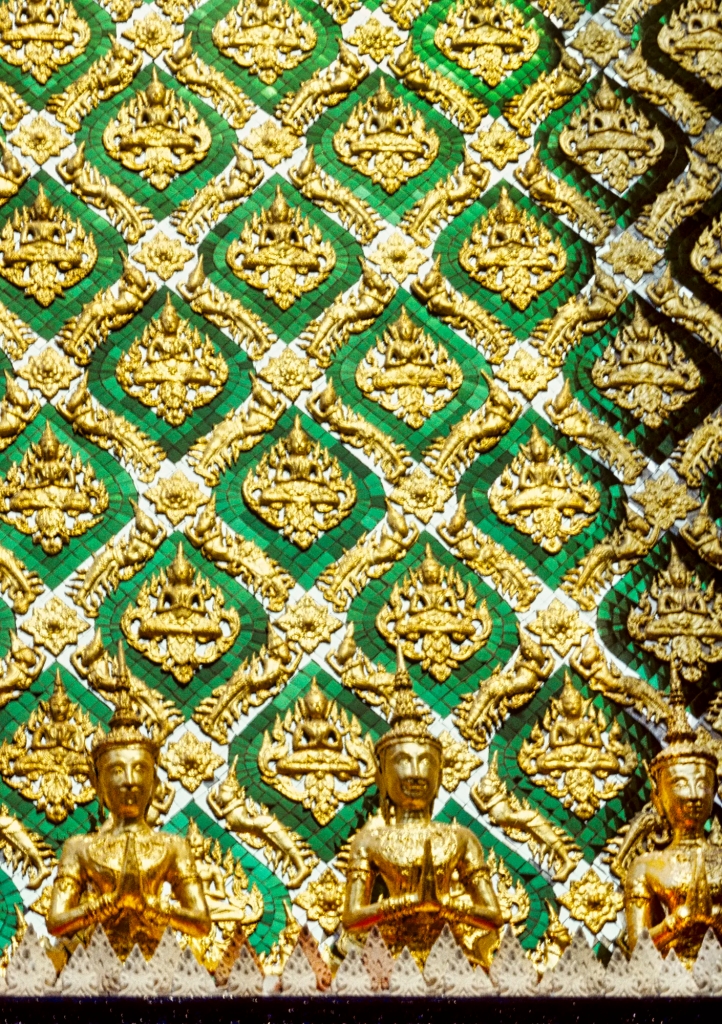
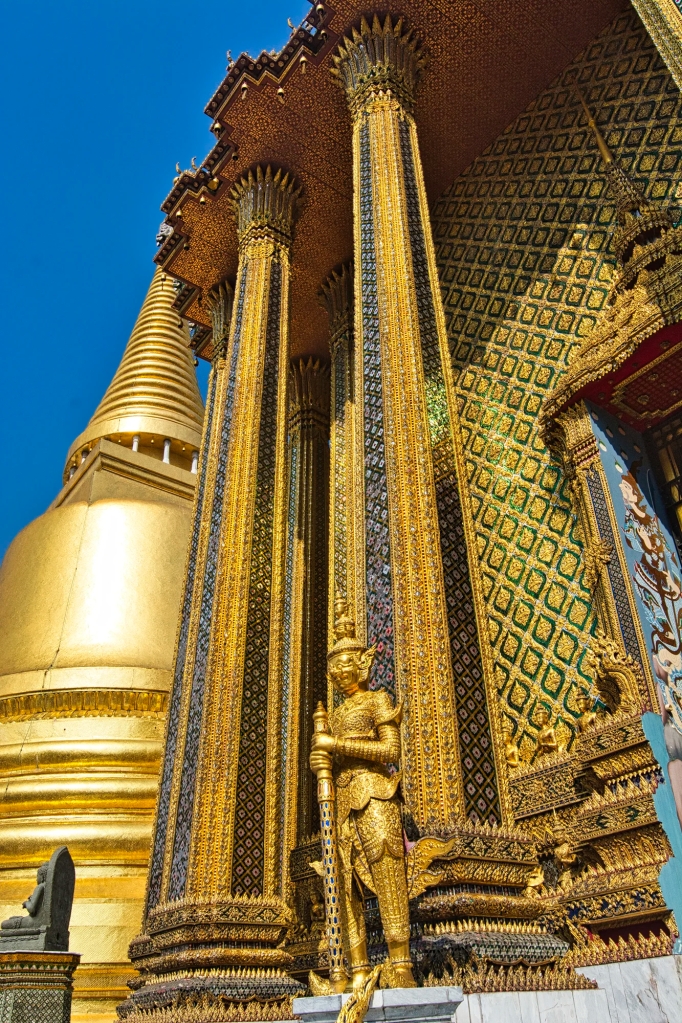
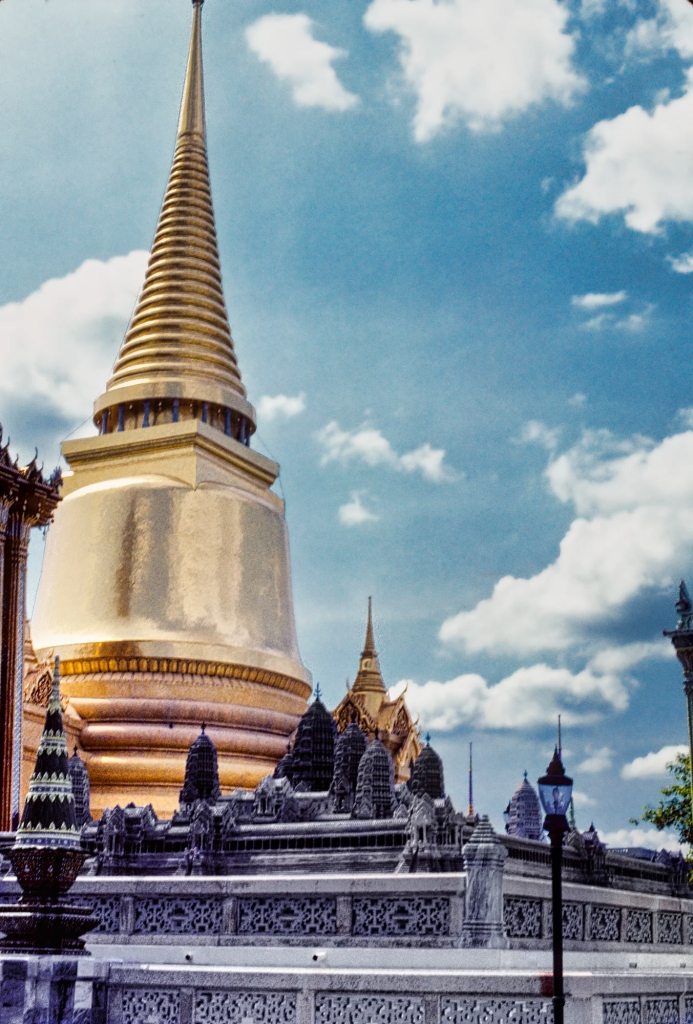
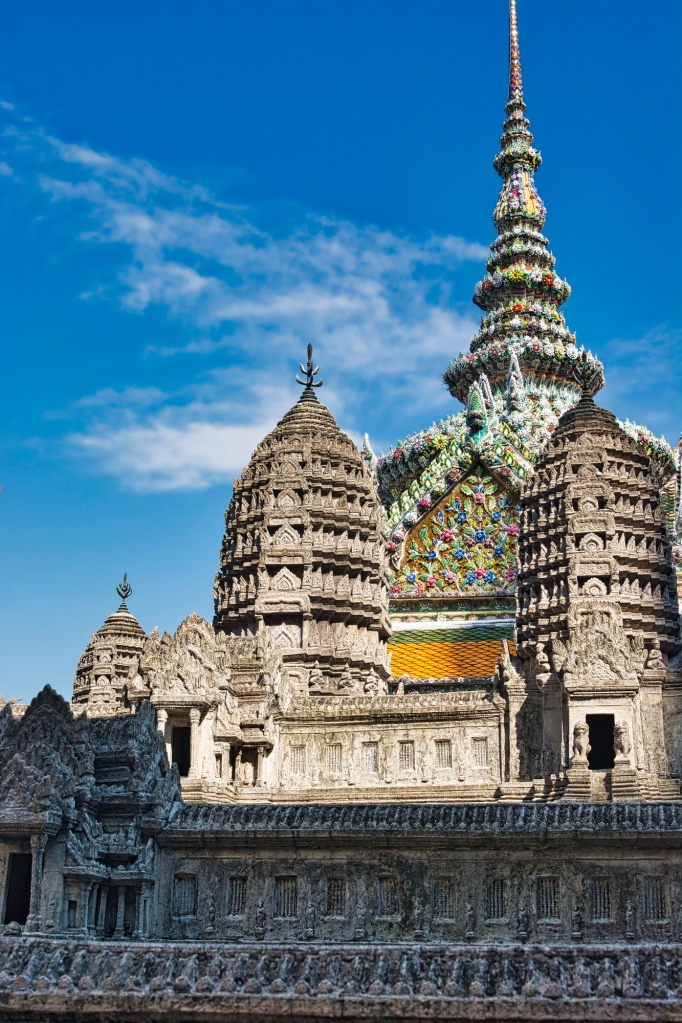
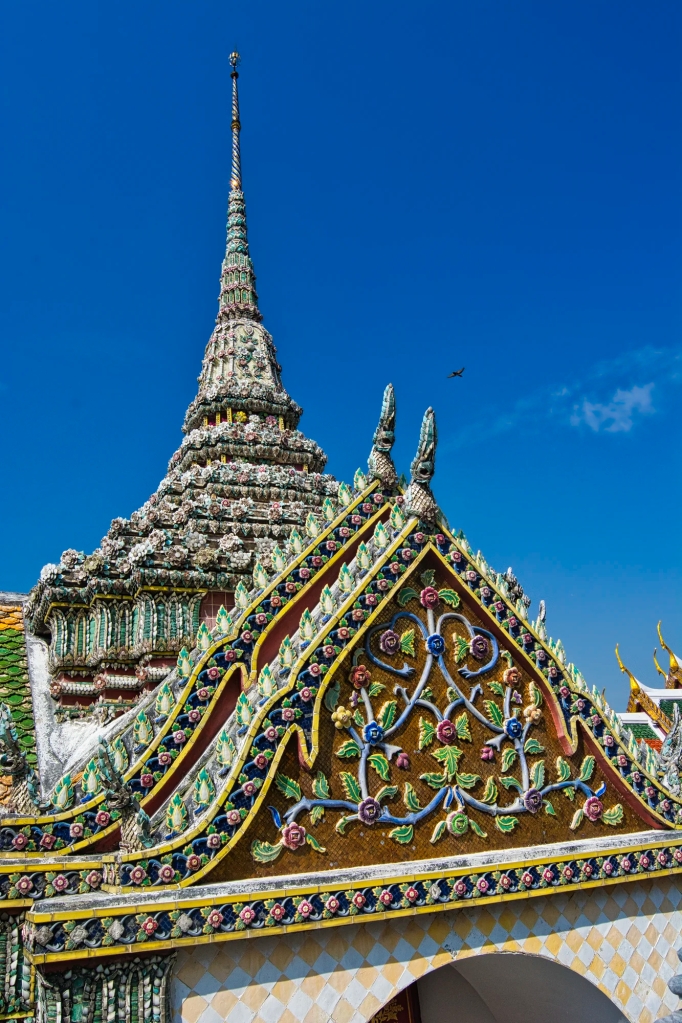
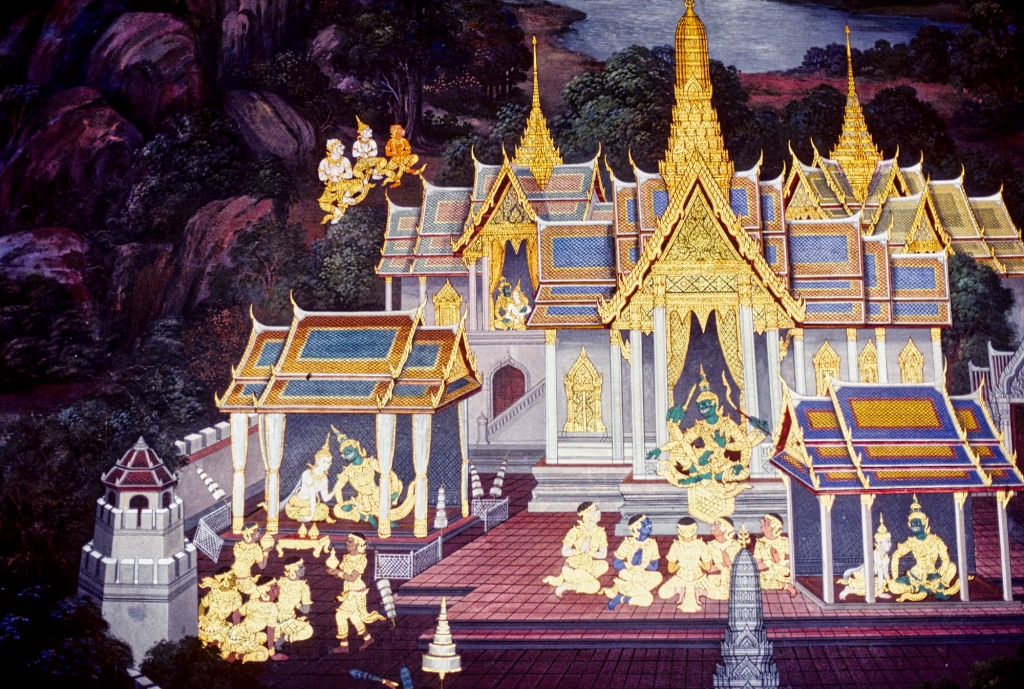
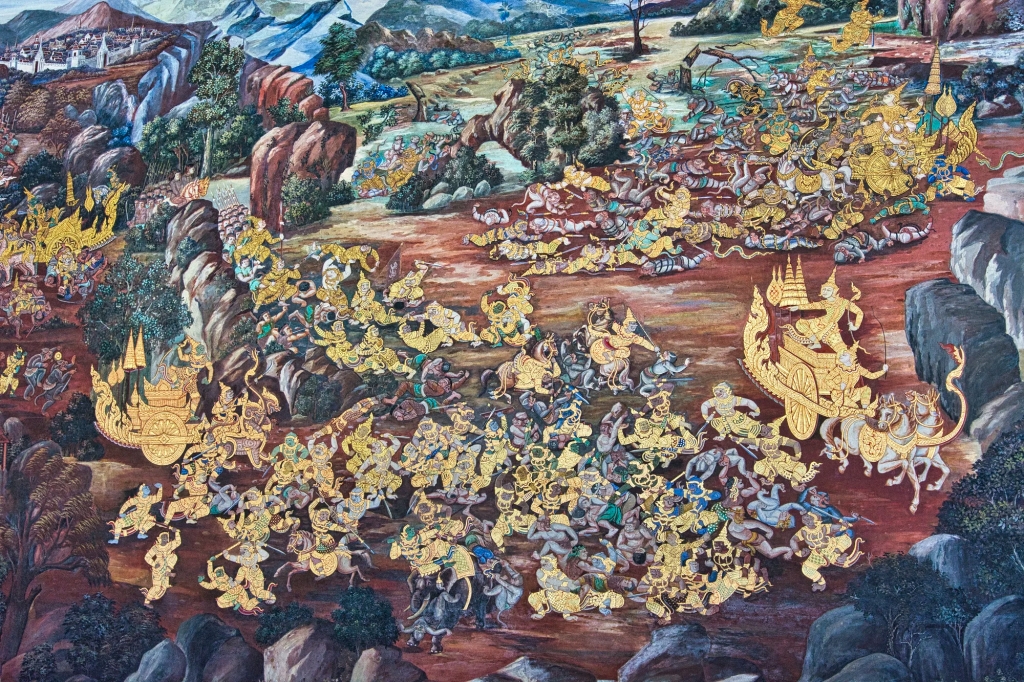
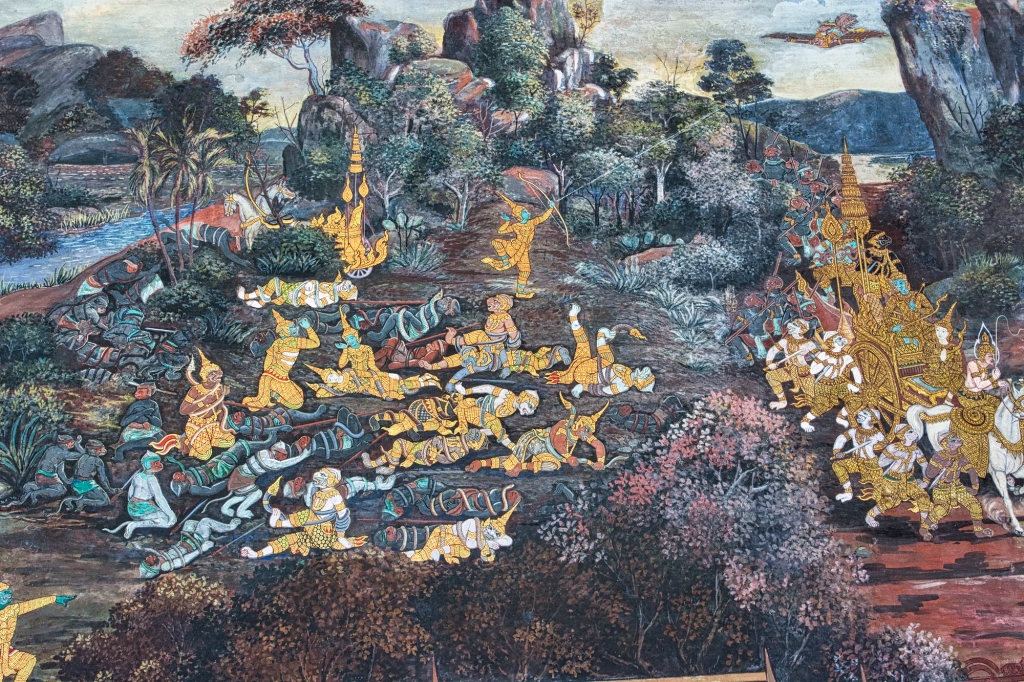
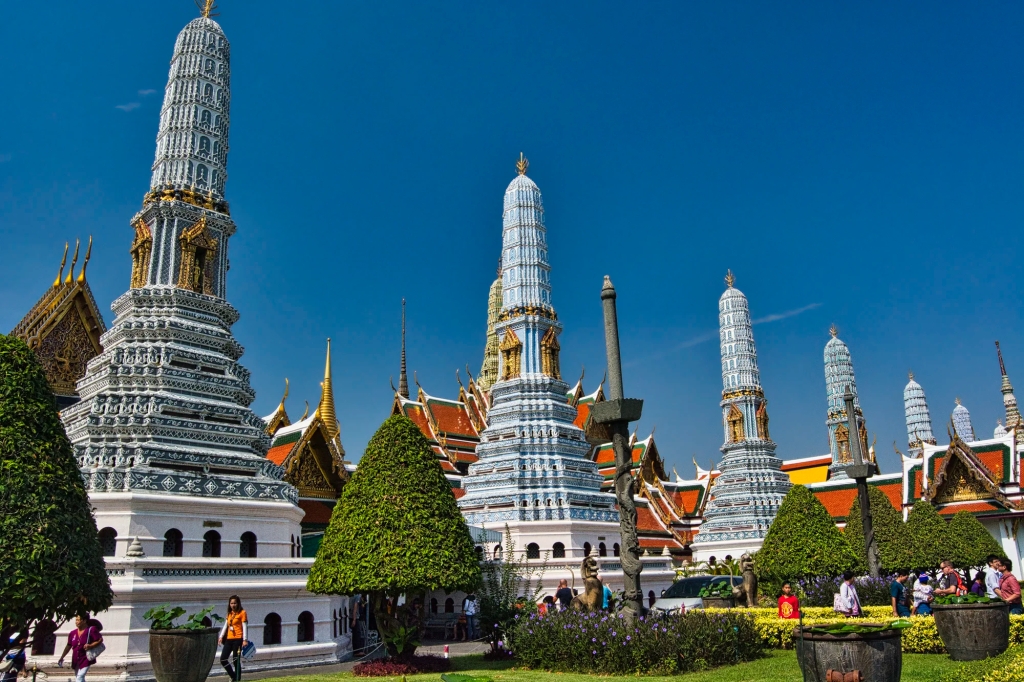
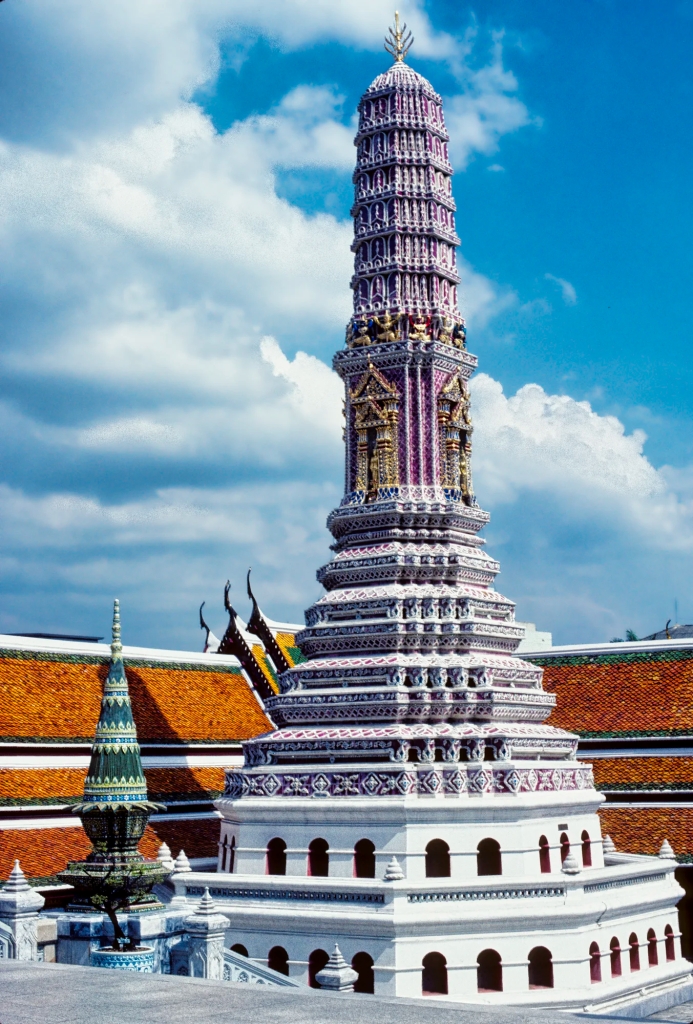
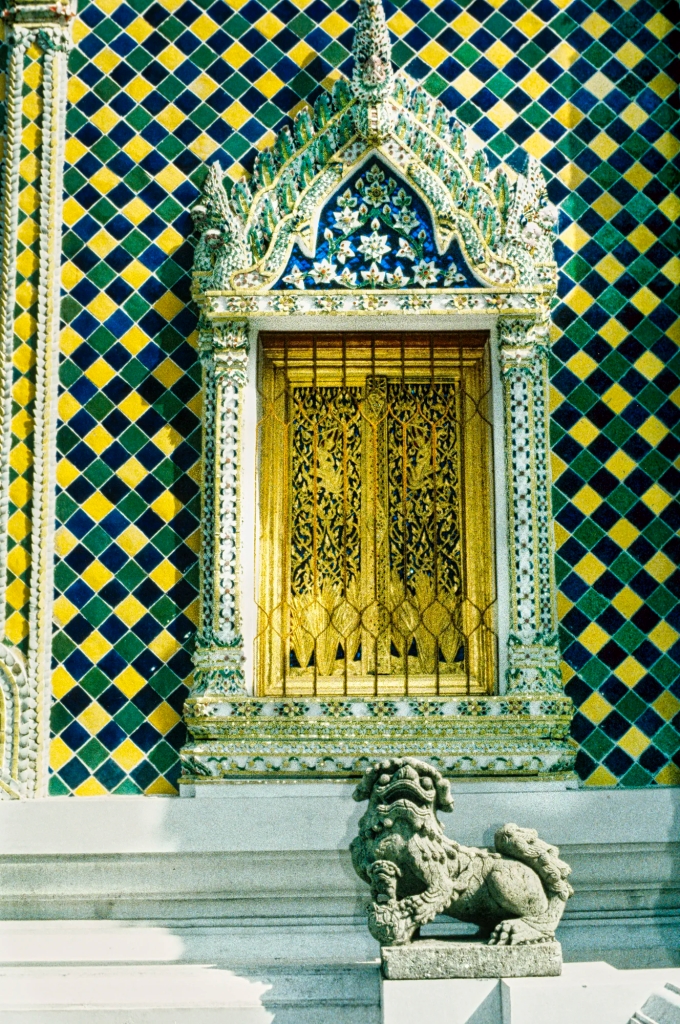
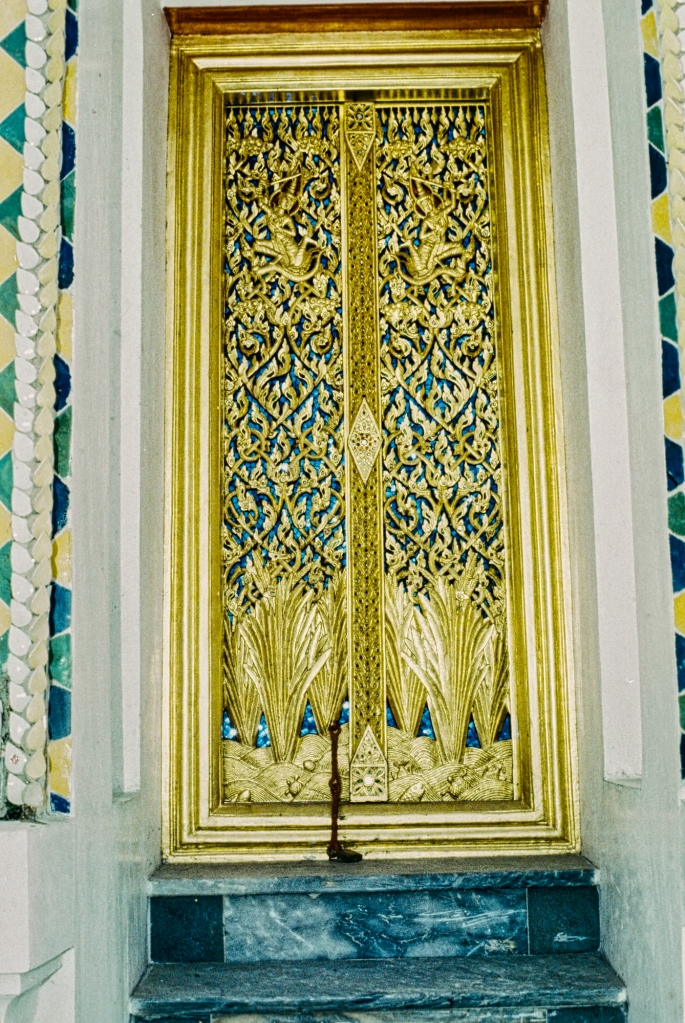
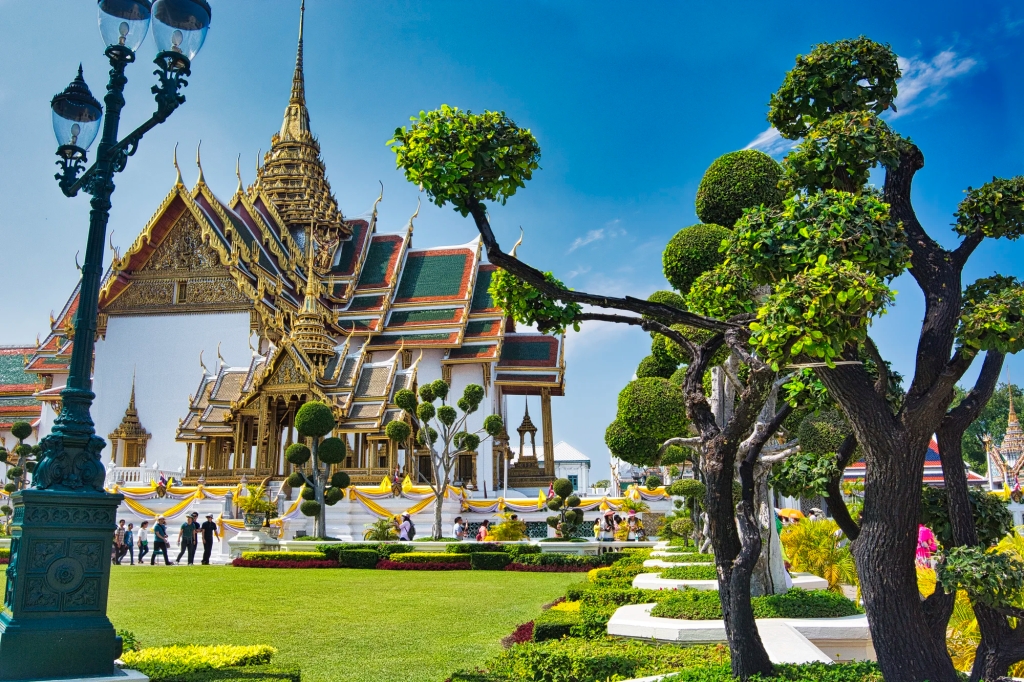
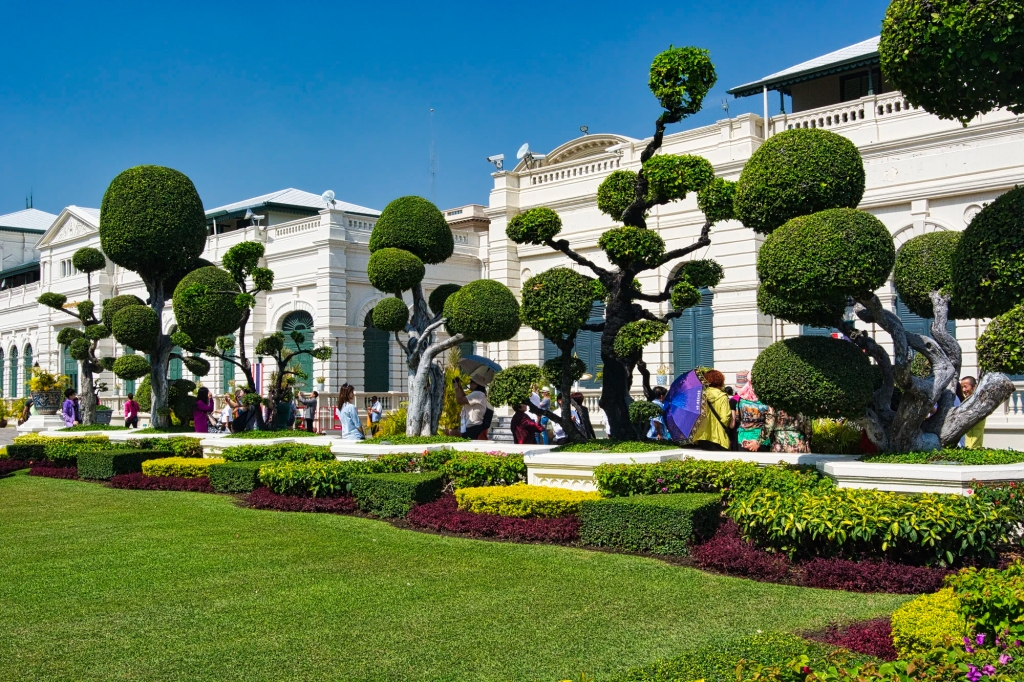
7 thoughts on “Bangkok — Do not Miss Wat Phra Kaew”